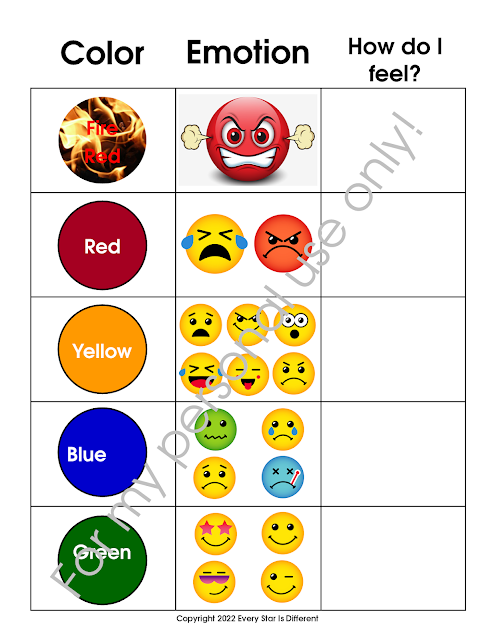When caregivers miss important emotional regulation cues, everyone suffers.
Emotional regulation is something that we've always worked on at home in various ways. It was super easy when Sunshine was home all the time.
But when she started attending a day program emotional regulation was not a focus in the classroom. Sunshine suffered because of this.
After some great meetings with her team, they introduced a color based emotional regulation program and chart at school. We carried over what was being taught at home, adding on to what we were already doing.
The program used at school introduced green representing the emotion happy. Blue stood for sick and/or sad. Yellow stood for emotions like anxious, nervous, scared, etc. Red stood for angry.
The concepts taught in the program at school were great, but based on Sunshine's struggles with brain activation, we realized we needed to add another emotion option to her chart, which we call "fire red."
Sunshine reaches "fire red" when her brain is activated to the point of having a behavioral seizure. During this time, behaviors do not stop until the seizure is finished. Most often these behaviors include hurting others and sometimes Sunshine hurting herself.










No comments:
Post a Comment